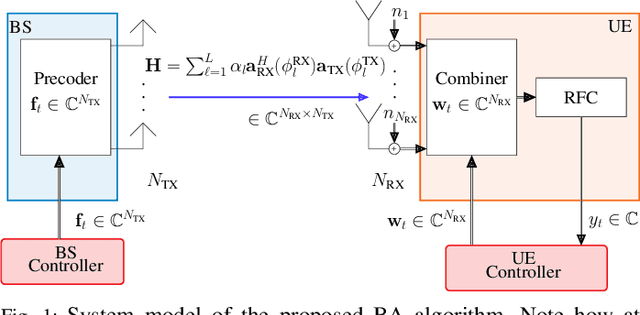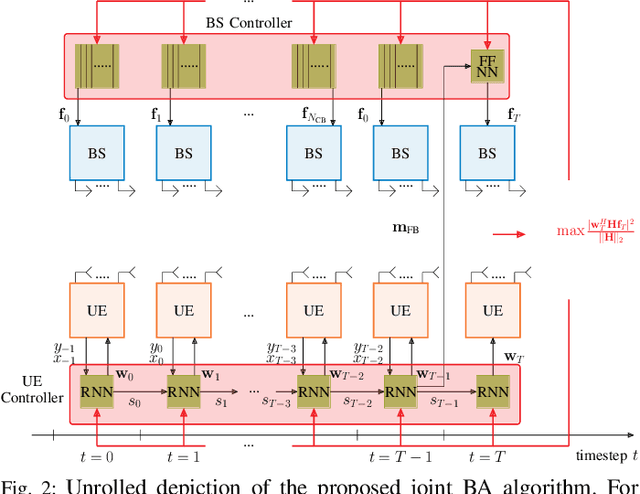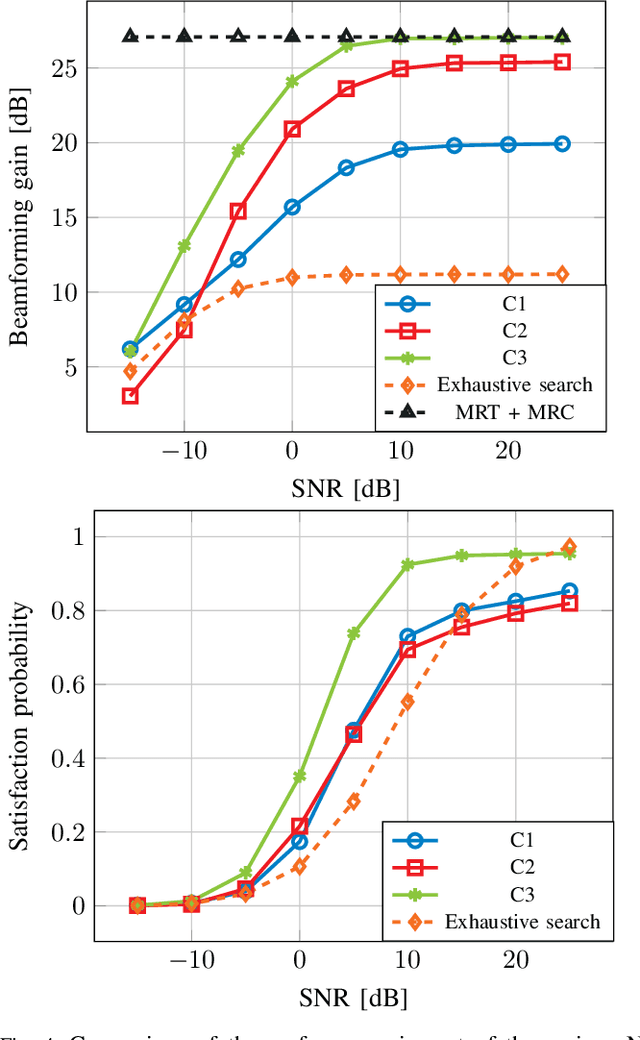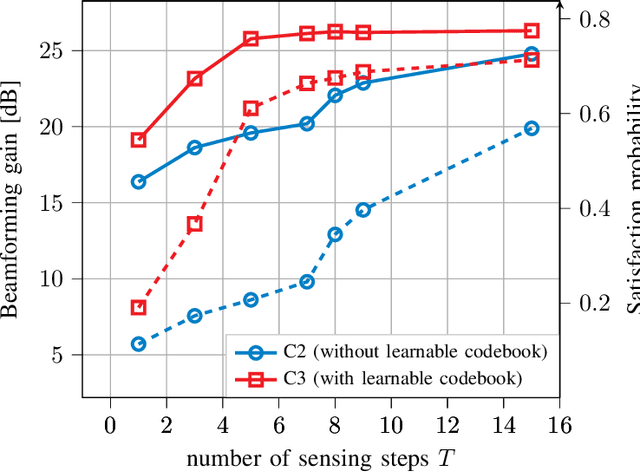Ahmet Serdar Tan
Deep Learning Based Adaptive Joint mmWave Beam Alignment
Jan 24, 2024



Abstract:The challenging propagation environment, combined with the hardware limitations of mmWave systems, gives rise to the need for accurate initial access beam alignment strategies with low latency and high achievable beamforming gain. Much of the recent work in this area either focuses on one-sided beam alignment, or, joint beam alignment methods where both sides of the link perform a sequence of fixed channel probing steps. Codebook-based non-adaptive beam alignment schemes have the potential to allow multiple user equipment (UE) to perform initial access beam alignment in parallel whereas adaptive schemes are favourable in achievable beamforming gain. This work introduces a novel deep learning based joint beam alignment scheme that aims to combine the benefits of adaptive, codebook-free beam alignment at the UE side with the advantages of a codebook-sweep based scheme at the base station. The proposed end-to-end trainable scheme is compatible with current cellular standard signaling and can be readily integrated into the standard without requiring significant changes to it. Extensive simulations demonstrate superior performance of the proposed approach over purely codebook-based ones.
Technology Trends for Massive MIMO towards 6G
Jan 05, 2023



Abstract:At the dawn of the next-generation wireless systems and networks, massive multiple-input multiple-output (MIMO) has been envisioned as one of the enabling technologies. With the continued success of being applied in the 5G and beyond, the massive MIMO technology has demonstrated its advantageousness, integrability, and extendibility. Moreover, several evolutionary features and revolutionizing trends for massive MIMO have gradually emerged in recent years, which are expected to reshape the future 6G wireless systems and networks. Specifically, the functions and performance of future massive MIMO systems will be enabled and enhanced via combining other innovative technologies, architectures, and strategies such as intelligent omni-surfaces (IOSs)/intelligent reflecting surfaces (IRSs), artificial intelligence (AI), THz communications, cell free architecture. Also, more diverse vertical applications based on massive MIMO will emerge and prosper, such as wireless localization and sensing, vehicular communications, non-terrestrial communications, remote sensing, inter-planetary communications.
 Add to Chrome
Add to Chrome Add to Firefox
Add to Firefox Add to Edge
Add to Edge